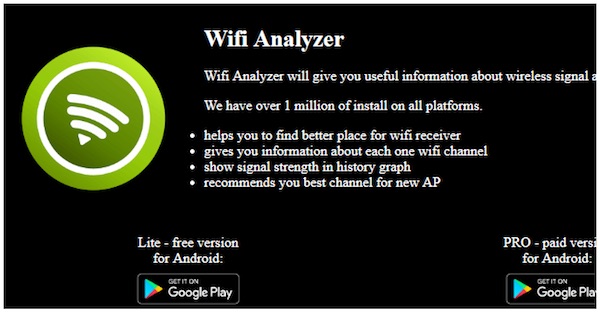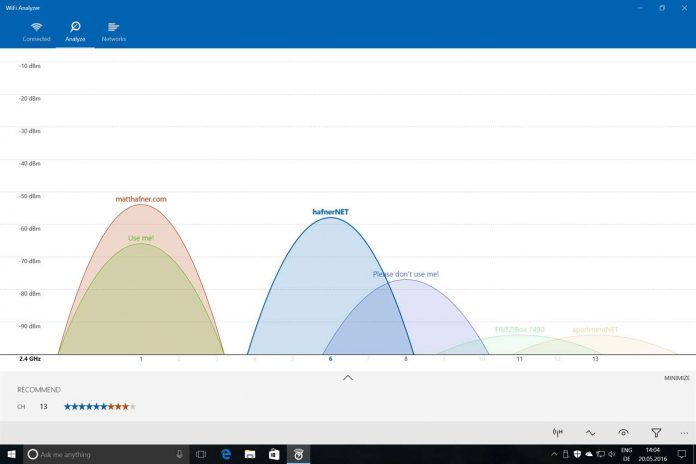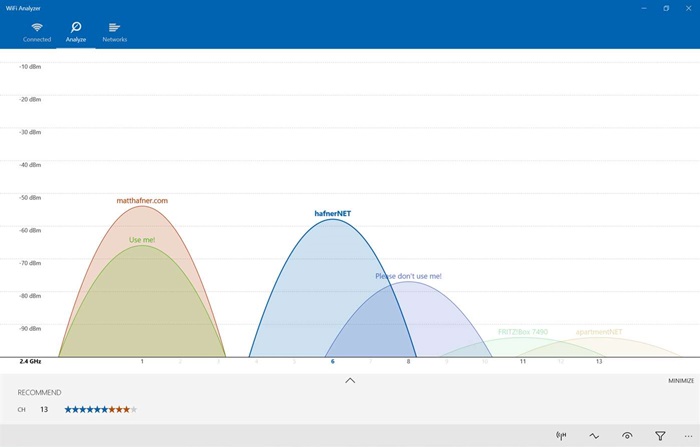
When you first open WiFi Analyzer, you can choose your location.

However, you can remove the occasional video ads by an in-app purchase of $1.99. A free full-featured ad-supported edition of WiFi Analyzer is provided. WiFi Analyzer is published by Matt Hafner and had a 4.5 rating out of 5 from 203 reviews. Here are the individual reviews of each app ( see screenshots of each product): WiFi Analyzer On the other hand, WiFi Tool doesn’t detect access point vendors, show out-of-range access points, or allow scan pausing like WiFi Commander does. However, WiFi Commander doesn’t show details on your current Wi-Fi connection, give traffic usage history or provide channel ratings like WiFi Tool does. They offer 3D graphs and numerous sorting and filtering options. WiFi Monitor has integrated speed testing for the paid app, but lacks sorting and filtering of the network list and ability to change the wireless adapter.īoth WiFi Commander and WiFi Tool are paid apps but offer free trials and provide great features and functionality.

If you don’t want to sit through occasional video ads, then you’ll want to pay the $1.99. WiFi Analyzer offers good filtering options, great for sifting through lots of networks, although sorting could be improved. WiFi Analyzer and WiFi Monitor are solid choices offering similar features. WiFi Scout lacks some advanced features, but it does offer two features that could be useful in certain situations: it creates separate network lists for the 2.4- and 5-GHz bands and it keeps out-of-range access points on the list. If you’re looking for a free app, consider WiFi Analyzer, WiFi Monitor, and WiFi Scout. Though most of the apps will recognize “hidden” SSIDs, they cannot reveal the actual SSIDs, like some other traditional Windows applications. Channel-width details are also not provided, so you won’t see accurate channel usage graphs and interference analysis, if there are access points utilizing channel widths greater than the legacy 20MHz. For example, these apps are not able to detect exactly what access point you’re connected to if there are other access points with the same SSID.

Keep in mind, the Wi-Fi features that developers can utilize in the Universal Windows Platform are still pretty limited.

Now we’re reviewing apps, published as Universal Windows Platform apps on the Microsoft Store, which can run on Windows 10 PCs, tablets and phones. These apps allow you to analyze the wireless access points and channels on the 2.4GHz and 5GHz bands in your network. We’ve reviewed Wi-Fi stumbler and surveying apps that run on Android, Windows, and Mac OS X devices.


 0 kommentar(er)
0 kommentar(er)
